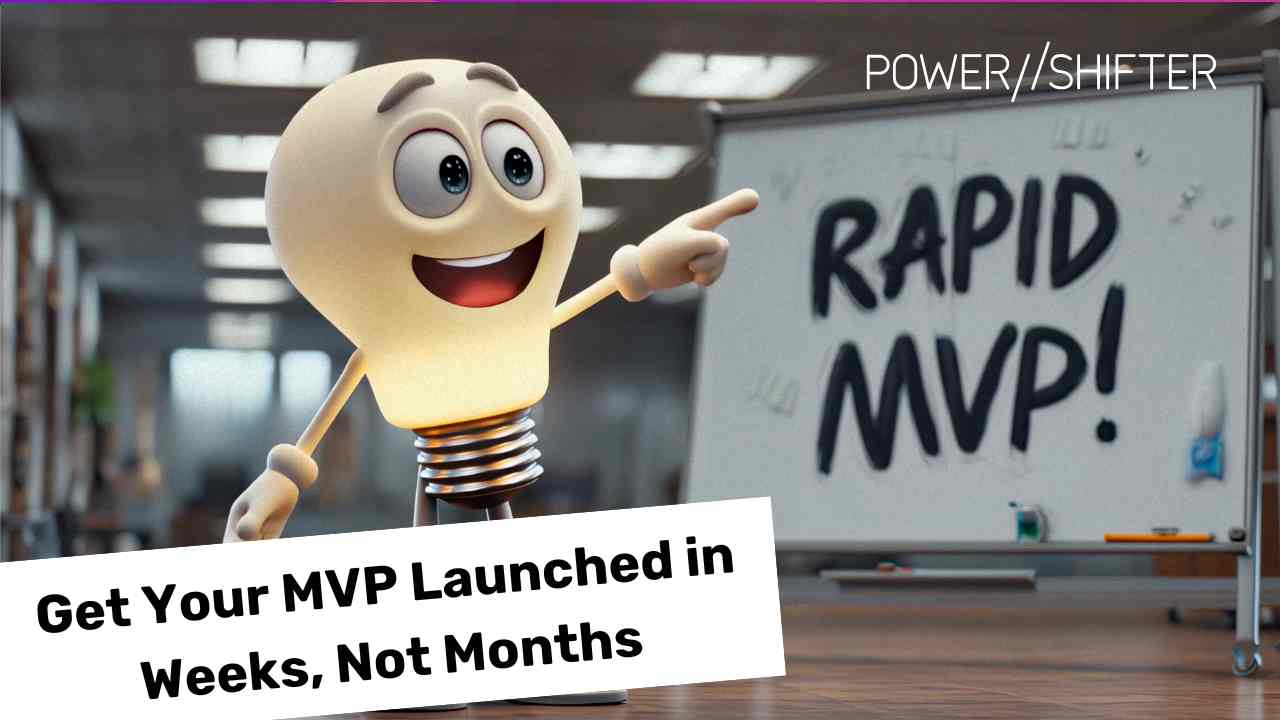Josh MacKinnon, Chief Operating Officer, Fastlane
It seems with each blink of an eye there's a new technology or trend defining the ways we build, run, and market companies — especially in the product and software development space. At POWER SHIFTER, we've made it a habit to not only stay on top of these changes, but to get ahead of them. Which is why the no- and low-code revolution comes as no surprise to us.
(ICYMI, no- and low-code platforms are tools that allow enterprise and citizen developers to drag-and-drop application components, saving valuable time spent manually writing code from scratch).
Here at POWER SHIFTER we predicted this change many years ago — leading us to partner with Webflow, a visual web design platform, CMS, and hosting provider with an industry-defining visual toolbox that makes low- and no-code builds simple and efficient.
Working with Webflow, we've established ourselves as a leading low-code enterprise partner, and are proud to formally announce our Fastlane division, a team specialized in low-code builds and dedicated to staying ahead of the changes in this innovative and growing space.
Fastlane: a division dedicated to our no- and low-code partners
Our partnership with Webflow has taught us a lot — and led to many highly successful projects that we're incredibly proud of. (If you'd like to check out some examples, take a look at this project and this one). As Webflow experts, we've seen firsthand its transformative powers for marketing teams who want to move fast without sacrificing great user experiences and design.
We've been especially excited about the potential to bring these benefits to more marketers who want to hit the ground running on a website project without overburdening their IT team. Our Fastlane division was built with this benefit in mind: we want to help our clients build high performing, responsive websites that they feel empowered to edit, adjust, and scale. In other words, we put each of our clients in the driver’s seat, setting them up to be in control of their own digital products.
At Fastlane, we move fast — hence the racecar motif — but like any good F1 driver knows, speed is only half the battle. We're just as focused on quality, precision, and end product: we engineer your websites for long-term success.
We're in the age of "devigners" (the developer + designer)
You may have heard the term "devigner" floating around recently. A portmanteau of developer + designer, "devigner" speaks to experts whose skill sets straddle both design and web development. For many growing companies, this person can be invaluable: they bring a design-first approach while keeping UX and functionality a priority along the way.
Tools like Webflow make it that much easier to take on both these roles. The visual toolbox makes it simple to build a website structure via drag-and-drop elements, and to add content, interactions, animations — as well as custom code if desired — to bring well-designed websites to fruition.
Webflow is nearing its 10-year anniversary — and has exciting updates in store
Fastlane feels well-timed over here at POWER SHIFTER: we've perfected how to build low- and no-code websites efficiently and effectively, while still impressing audiences with superior design and user experiences. Webflow itself isn't new — in fact, it's approaching its 10-year anniversary in 2023 — and the space is rapidly growing and changing. And we've been so excited to learn what's in store.
I recently attended the annual Webflow Conference in San Francisco to learn more about what Webflow has upcoming in its product roadmap. Some exciting items include:
- Improvements to Webflow's design system: Webflow's "Symbols" are changing to "Components'' and expanding to give users even more power and flexibility. In short, devigners will have a greater ability to edit directly on the canvas and to customize designs to adapt to different scenarios.
- A new developer preview of DevLink: Webflow is launching a powerful new product that connects Webflow-built components to React code bases. In their words: "This brings the full power of Webflow’s visual design tools to millions of developers building bespoke custom applications."
- Major updates to CMS storage architecture: Webflow has made exciting updates for Enterprise customers so that they can support websites of unprecedented scale (to the tune of an impressive 100,000+ items). This means customers can include virtually unlimited content types on their sites.
- Multi-language support: In response to customer requests, Webflow will be launching multi-language capabilities. This means customers will be able to customize the design of their websites for each language natively, directly in their designer. Additionally, for customers who already have established translation workflows, Webflow is developing APIs that enable existing partners to connect directly to their translation management systems, giving them the flexibility to continue managing languages according to the workflow that suits them best.
- Agency and Freelancer guest roles: Webflow has been investing heavily in collaboration, enabling teams to work more seamlessly across roles. These changes make it easier for external stakeholders to "drop in" to a Workspace without requiring clients to pay for additional users.
These are just some of the changes on the horizon. Our main takeaway is this: Webflow shows no signs of slowing down, and is only becoming easier to use to meet specific needs. We're very excited to continue partnering with them via our Fastlane division, and to continue defining the standard of excellence for low-code products in 2023 and beyond.
The future of low-code is already here. If you'd like to move at the speed of low-code with us, get in touch.


















